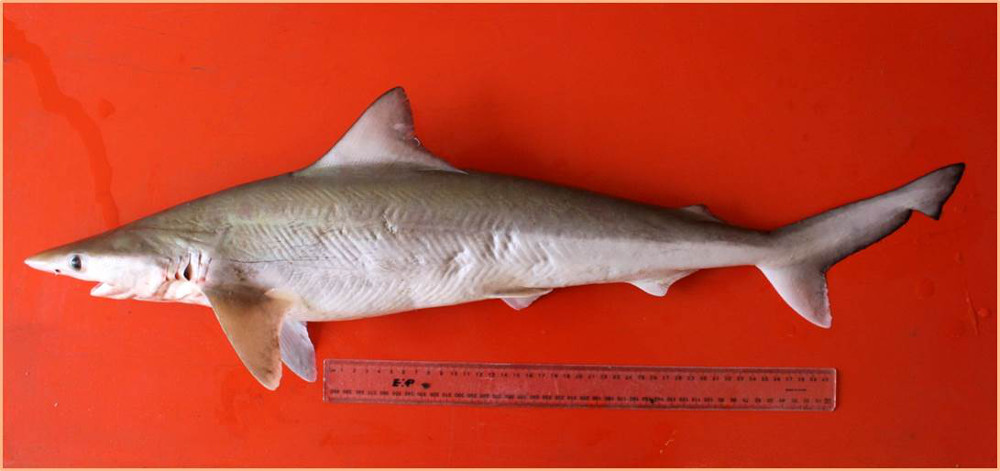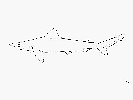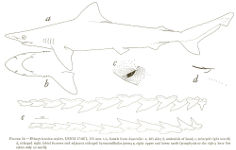Rhizoprionodon taylori
(Ogilby, 1915)
Australian sharpnose shark
Classification: Elasmobranchii Carcharhiniformes Carcharhinidae
Reference of the original description
On some new or little-known Australian fishes. Memoirs of the Queensland Museum, 3, 117–129
On some new or little-known Australian fishes. Memoirs of the Queensland Museum, 3, 117–129
Image of the original description
No image in first description.
No image in first description.
Synonyms / new combinations and misspellings
Physodon taylori, Protozygaena taylori, Rhizoprionodon (Protozygaena) taylori
Physodon taylori, Protozygaena taylori, Rhizoprionodon (Protozygaena) taylori
Description :
Citation: Rhizoprionodon taylori (Ogilby, 1915): In: Database of modern sharks, rays and chimaeras, www.shark-references.com, World Wide Web electronic publication, Version 01/2026
Please send your images of "Rhizoprionodon taylori" to info@shark-references.com

Rhizoprionodon taylori (Poey, 1861), female, adult, © Daniela Waltrick

Rhizoprionodon taylori (Poey, 1861), female, adult, © Daniela Waltrick
Common names
 Cazón picudo australiano,
Cazón picudo australiano,  Requin aiguille réchine,
Requin aiguille réchine,  Australian sharpnose shark,
Australian sharpnose shark,  Sharp-nosed shark,
Sharp-nosed shark,  Taylors shark
Taylors shark
 Cazón picudo australiano,
Cazón picudo australiano,  Requin aiguille réchine,
Requin aiguille réchine,  Australian sharpnose shark,
Australian sharpnose shark,  Sharp-nosed shark,
Sharp-nosed shark,  Taylors shark
Taylors shark
Short Description
Diagnostic Features: Prenarial snout 4 to 5% of total length; upper labial furrows short, 0.7 to 1.1% of total length; total count of enlarged hyomandibular pores on both sides of head just behind mouth angle usually over 16 (7 to 11 per side); teeth not serrate; total tooth rows usually 24 to 25/21 to 23. First dorsal origin over pectoral free rear tips; second dorsal origin ranges from above last fourth to sixth of anal base; pectoral anterior margin shorter than first dorsal length from origin to free rear tip; adpressed pectoral apex reaching first third of first dorsal base or ending in front of it. Posterior monospondylous precaudal centra hardly enlarged; precaudal centra less numerous than caudals, precaudals 73 to 80, total counts 135 to 149. Size small, males maturing over 40 cm total length. Colour brownish-grey above, white below, fins light-edged but not conspicuously marked.. [517]
Diagnostic Features: Prenarial snout 4 to 5% of total length; upper labial furrows short, 0.7 to 1.1% of total length; total count of enlarged hyomandibular pores on both sides of head just behind mouth angle usually over 16 (7 to 11 per side); teeth not serrate; total tooth rows usually 24 to 25/21 to 23. First dorsal origin over pectoral free rear tips; second dorsal origin ranges from above last fourth to sixth of anal base; pectoral anterior margin shorter than first dorsal length from origin to free rear tip; adpressed pectoral apex reaching first third of first dorsal base or ending in front of it. Posterior monospondylous precaudal centra hardly enlarged; precaudal centra less numerous than caudals, precaudals 73 to 80, total counts 135 to 149. Size small, males maturing over 40 cm total length. Colour brownish-grey above, white below, fins light-edged but not conspicuously marked.. [517]
Human uses
fisheries:
fisheries:
Biology
Viviparous, with a yolk-sac placenta [544] and 1-10 pups after a gestation period of 11-12 months; born at ~ 25 cm TL; very rapid growth [2539]. Distinct pairing with embrace [17086]. Occurs on the continental shelf and slope (Ref. 75154).
Viviparous, with a yolk-sac placenta [544] and 1-10 pups after a gestation period of 11-12 months; born at ~ 25 cm TL; very rapid growth [2539]. Distinct pairing with embrace [17086]. Occurs on the continental shelf and slope (Ref. 75154).
Remarks
shark-references Species-ID=6122;
shark-references Species-ID=6122;
Parasites (arranged by Jürgen Pollerspöck)
Monogenea
Cestoda
Copepoda
Monogenea
- Loimos everinghami Vaughan, Trujillo-González, Flint & Chisholm, 2025 [34634]
Cestoda
Copepoda
- Perissopus dentatus Steenstrup & Lütken, 1861 [16569]
- Pseudopandarus australis Cressey & Simpfendorfer, 1988 [16579] [25052]


















